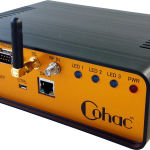Speaking to Inside GNSS at the recent InterGEO conference in Berlin, Olivier Casabianca, Vice President of Trimble Positioning Services, said “If you look at the way we work today, GNSS is still the key component, serving all of what we would consider the central geospatial industries, meaning construction, agriculture, transportation, etcetera. People talk about making a digital version of the world, and we understand that starts with knowing where you are, before, during and after, whatever job you’re doing. Precise positioning is fundamental.”
Trimble, stands alongside the likes of Hexagon/NovAtel and Topcon as a key provider of global precise positioning solutions, and continues to make rapid inroads into new and expanding areas of activity.
“You can extend this into all the adjacent industries,” Casabianca said. “PNT is becoming a prevalent need in the telecomms business, for example, in IoT [internet of things], and also in the automotive industry. Within Trimble, within my own Positioning Services division, we are working closely with OEM manufacturers, car manufacturers, providing precise positioning engines and Trimble RTX correction services for cars.
“We don’t need a telecommunication devise for our corrections,” he said. “With some other services you have to talk about ground infrastructure, so those are really regional services. Ours is coming from the sky. You could be in the middle of Africa, in Latin America, in the middle of China or somewhere in the desert, you get centimeter accuracy.
“I consider absolute positioning as a core technology. You build from there, so if you’re doing visual odometry, you’re doing LiDAR positioning and so on, you need to rely on absolute positioning first.”
GNSS alternatives
It is now widely posited that while GNSS is a fundamental provider of PNT, it is not a sufficient provider of PNT. The issue of identifying alternative-PNT solutions, and, more recently, ‘complimentary-PNT’ solutions, has been raised, in Europe, in the U.S. and beyond.
Casabianca said, “I think one thing you will see in the future is a lot of companies, start-ups, in Silicon Valley, or even Elon Musk with his Starlink, looking at putting up LEO constellations, being able to provide data that could be used for PNT. There is obviously some benefit associated with that. The LEO signal would be stronger, so you could work in more challenging environments, inside a building, and think about some new applications, timing applications, for example.
“However, there are so many players right now trying to launch these LEO constellations. Who is going to do it for PNT, versus communication? But we need to look at it, Trimble, as a company, because, again, positioning, PNT, is our DNA, and we will support it and follow it and be a part of it.”
“Other people, ourselves included, are looking at mixing GNSS with Wi-Fi and other signals, for indoor positioning. You can also use video. If you look in the automotive industry, in autonomous driving, we see different approaches to positioning and navigation. You have the Tesla way, for example, which is 100 percent based on video imaging. Then there are approaches based on the use of sensors. For me, the ideal, the ultimate solution is a combination of all of the above.”






